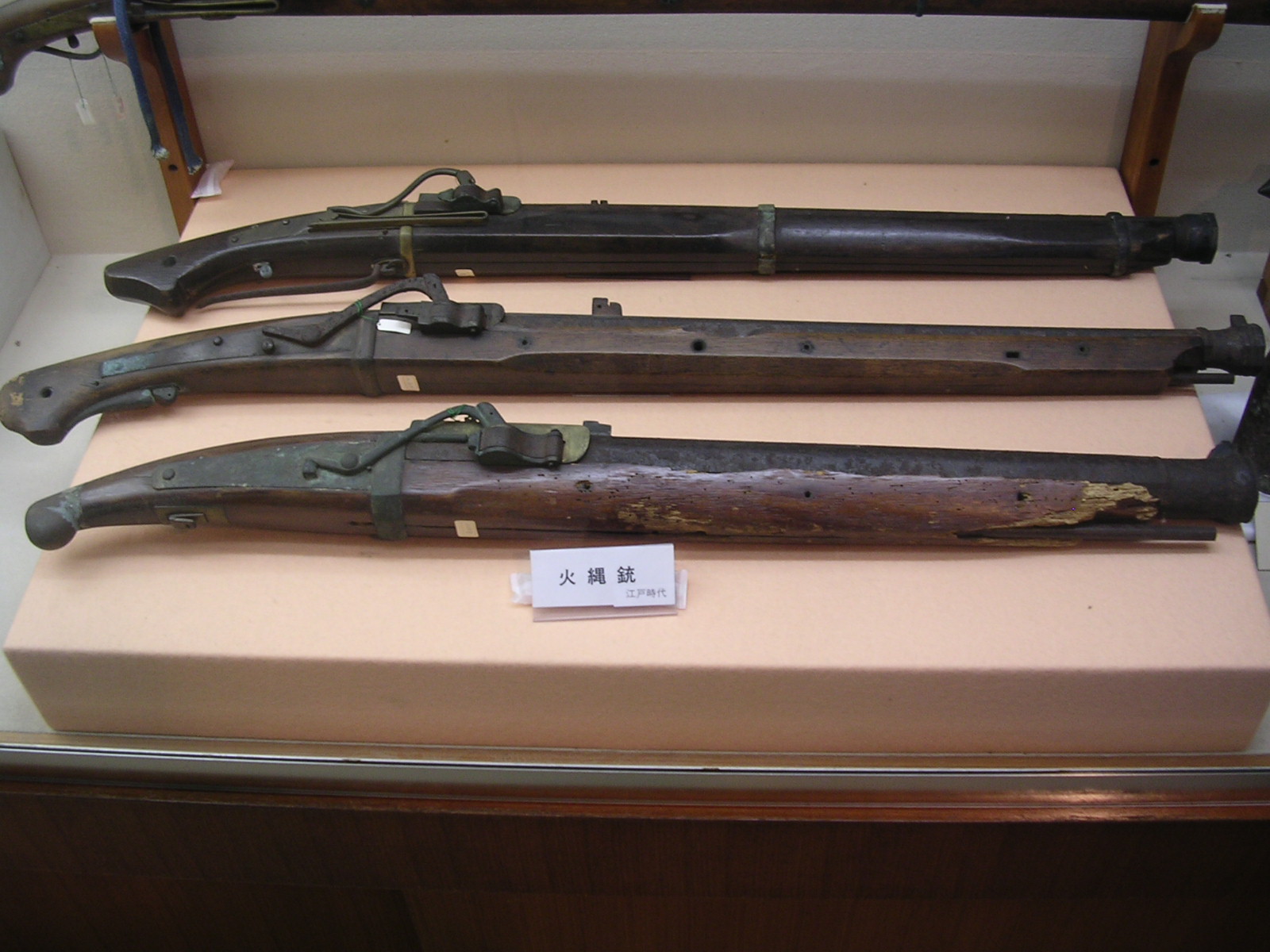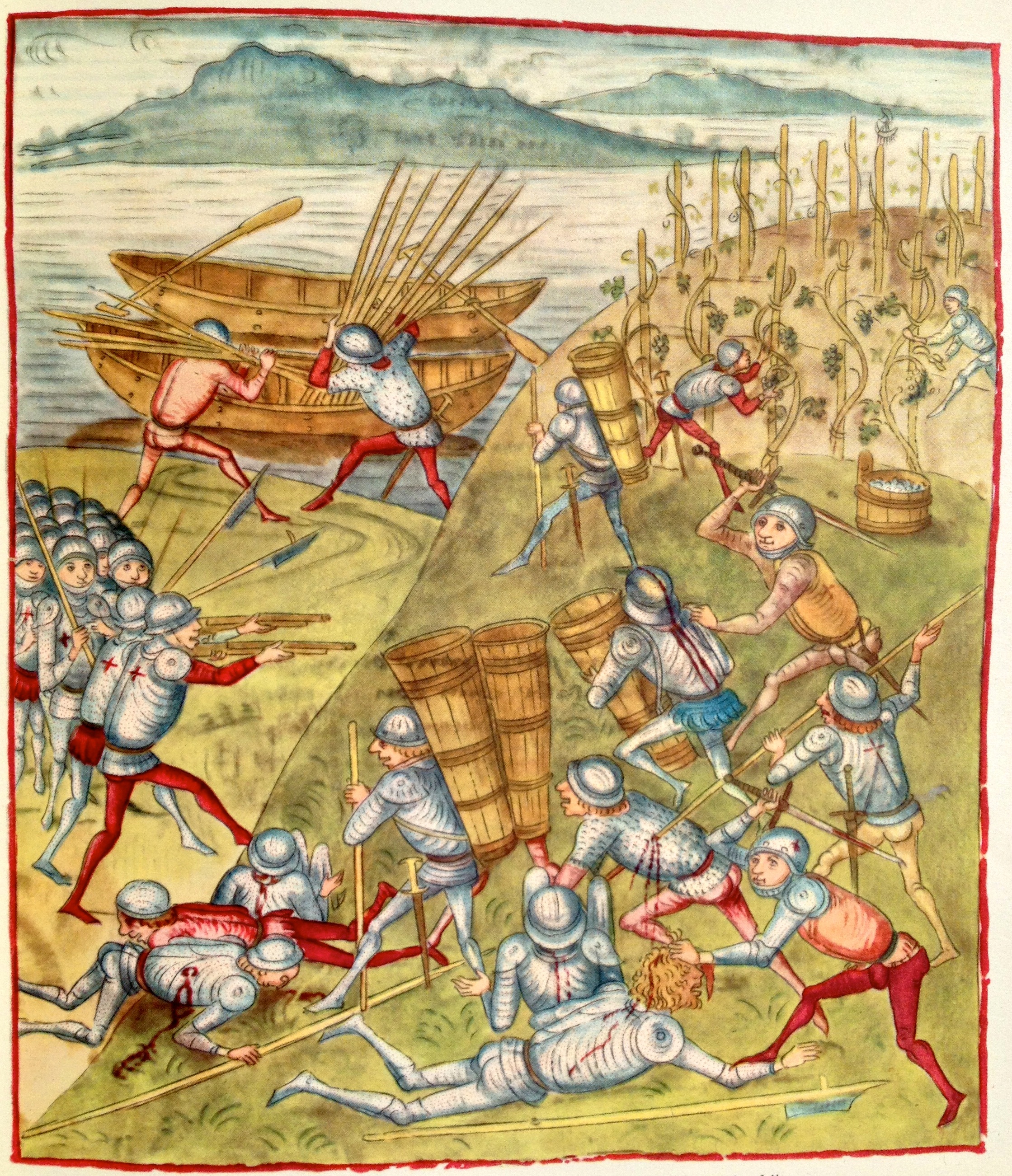|
Handgonne
The hand cannon ( or ), also known as the gonne or handgonne, is the first true firearm and the successor of the fire lance. It is the oldest type of small arms, as well as the most mechanically simple form of metal barrel firearms. Unlike matchlock firearms it requires direct manual external Making fire, ignition through a touch hole without any form of firing mechanism. It may also be considered a forerunner of the handgun. The hand cannon was widely used in China from the 13th century onward and later throughout Eurasia in the 14th century. In 15th century Europe, the hand cannon evolved to become the matchlock arquebus, which became the first firearm to have a Trigger (firearms), trigger. History China Dazu Rock Carvings The earliest artistic depiction of what might be a hand cannon—a rock sculpture found among the Dazu Rock Carvings—is dated to 1128, much earlier than any recorded or precisely dated archaeological samples, so it is possible that the concept of a ... [...More Info...] [...Related Items...] OR: [Wikipedia] [Google] [Baidu] |
Fire Lances
The fire lance () was a gunpowder weapon used by lighting it on fire, and is the ancestor of modern firearms. It first appeared in 10th–12th century China and was used to great effect during the Jin-Song Wars. It began as a small pyrotechnic device attached to a polearm weapon, used to gain a shock advantage at the start of a melee. As gunpowder improved, the explosive discharge was increased, and debris or pellets added, giving it some of the effects of a combination modern flamethrower and shotgun, but with a very short range (about ), and only one shot (although some were designed for two shots). By the late 13th century, fire lance barrels had transitioned to metal material to better withstand the explosive blast, and the lance-point was discarded in favor of relying solely on the gunpowder blast. These became the first hand cannons. Design The first fire lances consisted of a tube, usually bamboo, containing gunpowder and a slow match, strapped to a spear or othe ... [...More Info...] [...Related Items...] OR: [Wikipedia] [Google] [Baidu] |
Matchlock
A matchlock or firelock is a historical type of firearm wherein the gunpowder is ignited by a burning piece of flammable cord or twine that is in contact with the gunpowder through a mechanism that the musketeer activates by pulling a lever or Trigger (firearms), trigger with their finger. This firing mechanism was an improvement over the hand cannon, which lacked a trigger and required the musketeer or an assistant to apply a match directly to the gunpowder by hand. The matchlock mechanism allowed the musketeer to apply the match himself without losing his concentration. Description The classic matchlock gun held a burning slow match in a clamp at the end of a small curved lever known as the ''serpentine''. Upon the pull of a lever (or in later models a trigger) protruding from the bottom of the gun and connected to the serpentine, the clamp dropped down, lowering the smoldering match into the flash pan and igniting the priming powder. The flash from the primer traveled throug ... [...More Info...] [...Related Items...] OR: [Wikipedia] [Google] [Baidu] |
Arquebus
An arquebus ( ) is a form of long gun that appeared in Europe and the Ottoman Empire during the 15th century. An infantryman armed with an arquebus is called an arquebusier. The term ''arquebus'' was applied to many different forms of firearms from the 15th to 17th centuries, but it originally referred to "a hand cannon, hand-gun with a hook-like projection or lug on its under surface, useful for steadying it against battlements or other objects when firing". These "hook guns" were in their earliest forms defensive weapons mounted on German city walls in the early 15th century. The addition of a shoulder stock, priming pan, and matchlock mechanism in the late 15th century turned the arquebus into a handheld firearm and also the first firearm equipped with a trigger. The exact dating of the matchlock's appearance is disputed. It could have appeared in the Ottoman Empire as early as 1465 and in Europe a little before 1475. The heavy arquebus, which was then called a musket, was d ... [...More Info...] [...Related Items...] OR: [Wikipedia] [Google] [Baidu] |
Jurchen People
Jurchen (, ; , ) is a term used to collectively describe a number of East Asian people, East Asian Tungusic languages, Tungusic-speaking people. They lived in northeastern China, also known as Manchuria, before the 18th century. The Jurchens were renamed Manchu people, Manchus in 1635 by Hong Taiji. Different Jurchen groups lived as hunter-gatherers, pastoralist semi-nomads, or sedentary agriculturists. Generally lacking a central authority, and having little communication with each other, many Jurchen groups fell under the influence of neighbouring dynasties, their chiefs paying tribute and holding nominal posts as effectively hereditary commanders of border guards. Han Chinese, Han officials of the Ming dynasty (1368–1644) classified them into three groups, reflecting relative proximity to the Ming: #Jianzhou Jurchens, Jianzhou (Chinese: 建州) Jurchens, some of whom were mixed with Chinese populations, lived in the proximity of the Mudan River, Mudan river, the Changbai Mo ... [...More Info...] [...Related Items...] OR: [Wikipedia] [Google] [Baidu] |
Mongol
Mongols are an East Asian ethnic group native to Mongolia, China (Inner Mongolia and other 11 autonomous territories), as well as the republics of Buryatia and Kalmykia in Russia. The Mongols are the principal member of the large family of Mongolic peoples. The Oirats and the Buryats are classified either as distinct ethno-linguistic groups or as subgroups of Mongols. The Mongols are bound together by a common heritage and ethnic identity, descending from the Proto-Mongols. Their indigenous dialects are collectively known as the Mongolian language. The contiguous geographical area in which the Mongols primarily live is referred to as the Mongol heartland, especially in discussions of the Mongols' history under the Mongol Empire. Definition Broadly defined, the term includes the Mongols proper (also known as the Khalkha Mongols), Buryats, Oirats, the Kalmyks and the Southern Mongols. The latter comprises the Abaga Mongols, Abaganar, Aohans, Arkhorchin, Asud, Baarins, ... [...More Info...] [...Related Items...] OR: [Wikipedia] [Google] [Baidu] |
Nayan (Mongol Prince)
Nayan () was a prince of the Yuan dynasty. A member of the imperial Borjigin clan, he was a descendant of a brother of Genghis Khan, probably Temüge. He raised a noteworthy and serious rebellion against Kublai Khan and was subsequently executed for the rebellion. He was a Nestorian Christian. Much of what is known of Nayan was recorded by the Venetian traveller Marco Polo. Origins Nayan was a member of a collateral branch of the Mongol royal dynasty, being a descendant of one of the brothers of Genghis Khan. He was either a great-great grandson of Temüge, Genghis Khan's youngest full brother, or of Belgutai, his half-brother. More than one prince named Nayan existed and their identity has been confused; the historian Paul Pelliot was of the opinion that the Christian prince Nayan was not a descendant of Belgutai. He ascertains Nayan's father to be Ajul, son of Tacar, son of Jibügan, son of Temüge. The close male relatives of Genghis Khan were given control of large appanag ... [...More Info...] [...Related Items...] OR: [Wikipedia] [Google] [Baidu] |
History Of Yuan
The ''History of Yuan'' (), also known as the ''Yuanshi'', is one of the official Chinese historical works known as the '' Twenty-Four Histories'' of China. Commissioned by the court of the Ming dynasty, in accordance to political tradition, the text was composed in 1370 by the official Bureau of History of the Ming dynasty, under direction of Song Lian (1310–1381). The compilation formalized the official history of the preceding Yuan dynasty. Under the guidance of Song Lian, the official dynastic history broke with the old Confucian historiographical tradition, establishing a new historical framework asserting that the influence of history was equal in influence to the great Confucian classics in determining the course of human affairs. Layout and contents The historical work consists of 210 chapters chronicling the history of the Yuan dynasty from the time of Genghis Khan (c. 1162–1227) to the flight of the last Yuan emperor, Toghon Temür ("Emperor Huizong", 1333– ... [...More Info...] [...Related Items...] OR: [Wikipedia] [Google] [Baidu] |
Mongol Invasions Of Japan
Major military efforts were taken by Kublai Khan of the Yuan dynasty in 1274 and 1281 to conquer the Japanese archipelago after the submission of the Korean kingdom of Goryeo to Vassal state, vassaldom. Ultimately a failure, the invasion attempts are of macro-historical importance because they set a limit on Mongol expansion and rank as nation-defining events in the history of Japan. The invasions are referred to in many works of fiction and are the earliest events for which the word ''Kamikaze (typhoon), kamikaze'' (神風 "divine wind") is widely used, originating in reference to the two typhoons faced by the Yuan fleets. The invasions were one of the earliest cases of History of gunpowder#Use by the Mongols, gunpowder warfare outside of China. One of the most notable technological innovations during the war was the use of explosive, hand-thrown bombs. Background After a series of Mongol invasions of Korea between 1231 and 1281, Goryeo signed a treaty in favor of the Mongol ... [...More Info...] [...Related Items...] OR: [Wikipedia] [Google] [Baidu] |
Radical (Chinese Characters)
A radical (), or indexing component, is a visually prominent Chinese character components, component of a Chinese character under which the character is traditionally listed in a Chinese dictionary. The radical for a character is typically a semantic component, but it can also be another structural component or an artificially extracted portion of the character. In some cases, the original semantic or phonological connection has become obscure, owing to changes in the meaning or pronunciation of the character over time. The use of the English term ''radical'' is based on an analogy between the structure of Chinese characters and the inflection of words in European languages. Radicals are also sometimes called ''classifiers'', but this name is more commonly applied to the grammatical Chinese classifier, measure words in Chinese. History In the earliest Chinese dictionaries, such as the ''Erya'' (3rd centuryBC), characters were grouped together in broad semantic categories. Be ... [...More Info...] [...Related Items...] OR: [Wikipedia] [Google] [Baidu] |
Siege Of De'an
The siege of De'an (德安之戰) was fought as part of the Jin-Song Wars of China in 1132, during the Jin invasion of Hubei and Shaanxi. The battle between the besiegers, a group of rebels led by Li Heng and the Song Chinese defenders is important in global history as the first recorded instance of the fire lance, an early ancestor of firearms, being used in battle. Background After the Jingkang incident, Jingkang crisis, the Song capital Kaifeng fell to the Jurchens. In 1130, the Jurchens established a puppet state called Great Qi to govern the newly acquired land. Liu Yu, a former Song governor of Jinan who capitulated to the Jurchens, was appointed as Great Qi's emperor. Liu Yu's regime was unpopular to the people, which led to several rebellions. One of the rebel leaders, Sang Chong (桑冲), pledged allegiance to the Southern Song emperor. However, Huo Ming, a Song general, suspecting Sang Chong to be a Jurchen spy, ordered to kill him. Li Heng, Sang Chong's subordinate, th ... [...More Info...] [...Related Items...] OR: [Wikipedia] [Google] [Baidu] |




